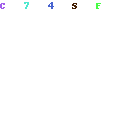Causes of Back Pain in Female
The rate of back pain among women is significantly greater than that of any other category and ranges from 10% to 37 percent. There are cases where women might be more likely to experience a higher prevalence of back pain there are many more causes. Hysterectomy, multiple pregnancy and pregnancy, cancer, and degenerative diseases are frequently the causes for back pain for women.
Back pain associated with pregnancy is an especially common ailment that is more serious than back pain by itself. Many women who are pregnant experience discomfort in their backs that are extreme and unbearable, which is often connected to the extreme changes in pregnancy.
The main distinctions between women and men with back pain due to their physical activity and the age. Men with lower level of activity, and in general more the age (but in no way necessarily older) are associated with lower back discomfort and back pain.
Low Back Pain
In terms of the frequency of back pain that is low within the general adult population it is estimated that the female population is between 1 and 4% of the population, whereas the incidence of back pain among males is less than percent. For age, adolescence and early adulthood are two to three times more likely to experience back pain as those later in the course of. The reason for this is believed to be related to physical demands placed on those who suffer from lower back pain. Someone with low back pain will require more physical exertion than someone who is not suffering. The main reason for the increased physical demands is the accidental lifting of weights.
This is, in turn, a reason for an increased physical strain on the body. Lifting weights also adds to the amount of stress placed to the back. The problem with this kind of operation involves a spinal structure that is robust enough to withstand these extra pressures and also doesn’t have the bone strength required to withstand the extra weight. This causes an increase in stress on the disc as well as an increase in pressure exerted through the disc. As the disc press upwards, it presses upon the disc, causing further damage.
The disc’s length creates issues in it. The disc is itself. In some instances the patient may experience suffering from pain because of irritation of nerve endings inside the disc. These nerve endings cause vibrating disc and also create an area of depression in the disc that rests on the nerves. There are many places within our bodies that disc could rest and protrude for example, the neck, back or knee. These places are where the disc can touch nerves, which can cause pain and discomfort due to excessive stimulation.
Physical Therapy
A person who is suffering from nerve endothelial irritation might require the treatment of chiropractic or physical therapy. Meniscus tears are typically the source of injuries resulting from falls that result in landings and the patient may not feel discomfort due to the tear of the cartilage inside the knee. Another reason for pain in the knee that could be caused by meniscus tears are arthritis, osteoarthritis, and deformities of the knee that are angular. Osteoarthritis, which is the degeneration of the cartilage as well as surrounding knee joints can occur with age. The condition may cause arthritis-related pain caused by the wear of the joint’s surface.
Furthermore, those suffering from arthritis might suffer from pain because of the degeneration of the cartilage of the knee joint. Arthritis is a condition of inflammation in joints caused by extensive wear and tear on the joint. When cartilage wears away, joint starts to rub against the bone. As well as the pain, arthritis may cause swelling, redness as well as inflammation and diminished mobility. Therefore, it is essential to collaborate together with the help of an Orthopedic Massage Therapist in order to ensure the joint’s mobility and comfort.
Maintaining joint ease in time will prevent the patient from becoming at risk in the near future.
TMJ disorders TMJ conditions are collection of conditions that result in muscle spasms, pain and stiffness of the face, jaw and the head. There are a myriad of conditions which affect the jaw and jaw muscles. In time the muscles of your face may wear out, which can cause pain and inflammation. However, due to the shape that your face has, specific muscles are more suited to support the jaw when you suffer from different conditions. See an authorized, educated and skilled expert to treat your TMJ problem and ensure the health of your face and jaw. Also, visit an acupuncturist and a massage therapist regularly to maintain good health, lessen discomfort, and help prevent injuries.
What causes upper back pain? for females
Back discomfort is a sign of the presence of disc. Inserting discs into the spine is a gruelling procedure that increases the chance of complications, therefore it is essential to learn how to recognize symptoms when they develop. Take advantage of online courses offered by one of the most reputable universities to get trained in the disc surgery field, which is now a major part of all spinal operations. Social anxiety disorder Trustmark phone number. What is DSM IV stand for this test reveals surprising things regarding your character. Related ArticlesPhysical Pain That Takes You Down In the midst of a myriad of physical pains, we often forget to treat the emotional-psychological aspect of our suffering. Certain types of pain could be related to two types of injury caused by nerves. These include damage to the nerves that result from the accident that caused it as well as scar formation that extends that extends beyond the limits of the initial injury.







